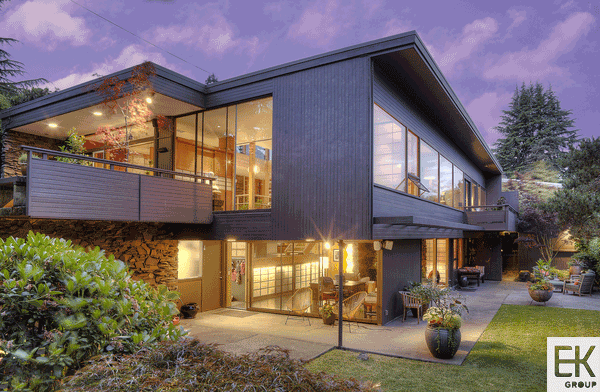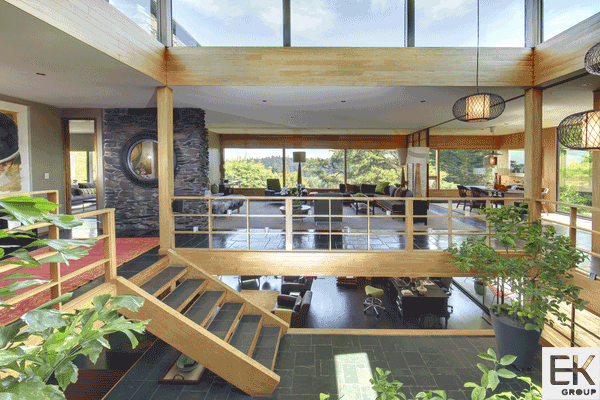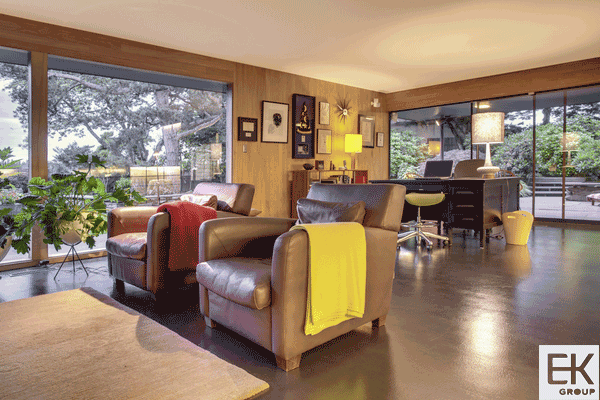The postwar era in America witnessed the expression of a new approach to architecture, one appropriate for the modern age. It was practical, functional and economical. Open spaces, new materials and connections between the outside world and the inside of a home were crafted harmoniously.
Click on the picture to view the Exterior Gallery
This aesthetic took root in Seattle after World War II and quickly became popular throughout the Pacific Northwest, albeit with modifications that capitalized on the assets of regions reflecting a love of warm, natural, local materials as well as dramatic views of nature. Prior to the 1950’s, Seattle could not boast a distinctive regional architectural and artistic style. With Modernism, this changed – and the agents of this change in the realm of architecture were four men: Paul Thiry, Roland Terry, Victor Steinbrueck and Paul Hayden Kirk.
Click on the picture to view the Interior Gallery
Nationally, the new architectural modernist style used strong materials such as reinforced concrete, glass and steel frames to define new age homes by clean lines, simple shapes and unornamented facades. Kirk’s Dowell Residence, which Architectural Record magazine highlighted among its “Record Houses” in 1957, represented a bold softening of the severe international style. It replaced the abundant use of concrete and steel with the richness of fir, cedar and locally quarried stonework.
Click on the picture to view the Archive Gallery
To learn more and view over 100 photographs, visit TheDowellResidence.com
 Facebook
Facebook
 X
X
 Pinterest
Pinterest
 Copy Link
Copy Link


